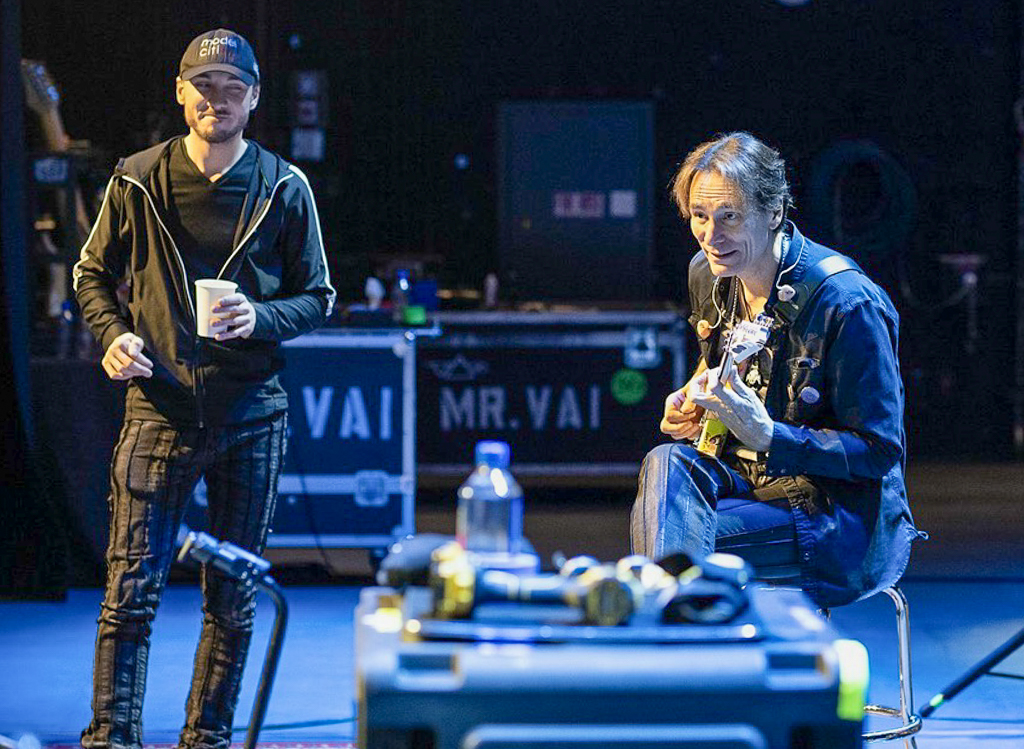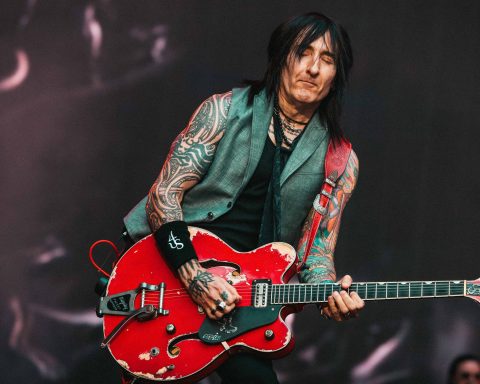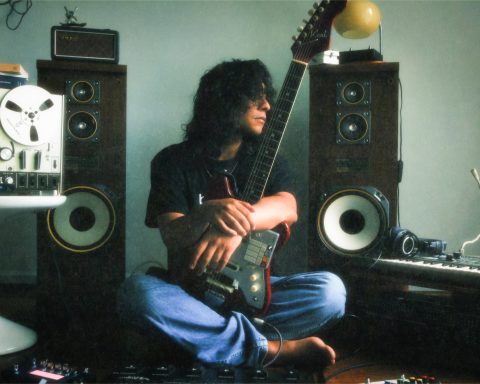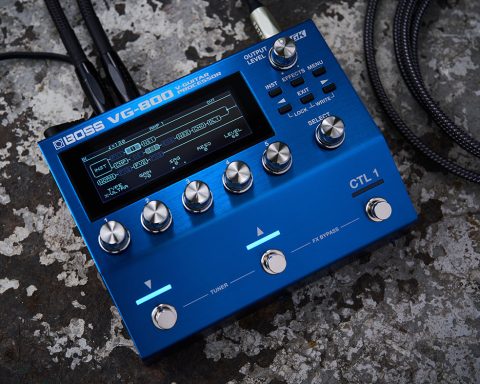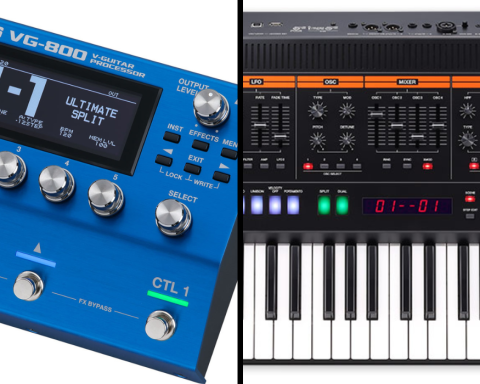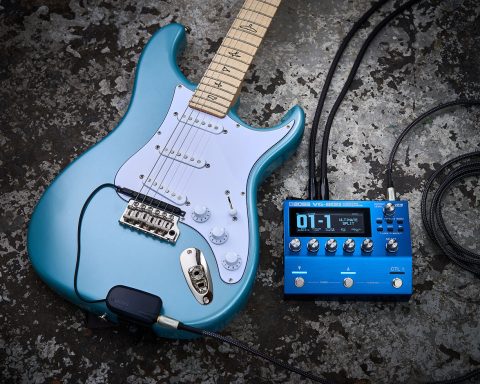Behind every legendary performance is a team of experts who make it all possible. In this in-depth interview, we speak with Doug MacArthur, Steve Vai’s esteemed guitar tech, about his vital role in the BEAT tour—a groundbreaking tribute to King Crimson’s iconic 1980s albums. With Vai’s unparalleled virtuosity and King Crimson’s matchless legacy as the backdrop, MacArthur shares how he crafted cutting-edge guitar rigs using the latest BOSS Guitar Synthesizers and the GK-5 Divided Pickup. These innovative setups delivered flawless performances that paid homage to one of prog rock’s most influential eras.
Prog-Rock Progenitors
In 1969, King Crimson’s revolutionary debut album, In the Court of the Crimson King, made waves throughout the guitar world and beyond. Heralding the arrival of progressive rock, that year also saw the release of debut albums by contemporaries Yes, Genesis, and Van der Graaf Generator. Unified by guitar mastermind Robert Fripp, King Crimson’s stunning virtuosity and vision earned them an enviable reputation.
King Crimson evolved spectacularly from the get-go, with a trailblazing series of studio albums emerging in rapid succession. In the Wake of Poseidon and Lizard both dropped in 1970, followed by Islands in 1971. 1973’s celebrated Larks’ Tongues in Aspic showcased a renewed creative trajectory, though King Crimson’s final genre-defining LPs of the 1970s appeared just the following year: Starless and Bible Black and Red. After that, the group was completely inactive until 1981.
Enter maverick guitarist and vocalist Adrian Belew, plus legendary bassist and backing vocalist Tony Levin. Along with Fripp and drummer extraordinaire Bill Bruford, this powerful quartet comprised the much-lauded 1980s King Crimson lineup that recorded a trio of classic albums: Discipline (1981), Beat (1982), and Three of a Perfect Pair (1984). Last year, guitar genius Steve Vai and sensational Tool drummer Danny Carey joined Belew and Levin to create BEAT, a live “creative reinterpretation” of these historic recordings.
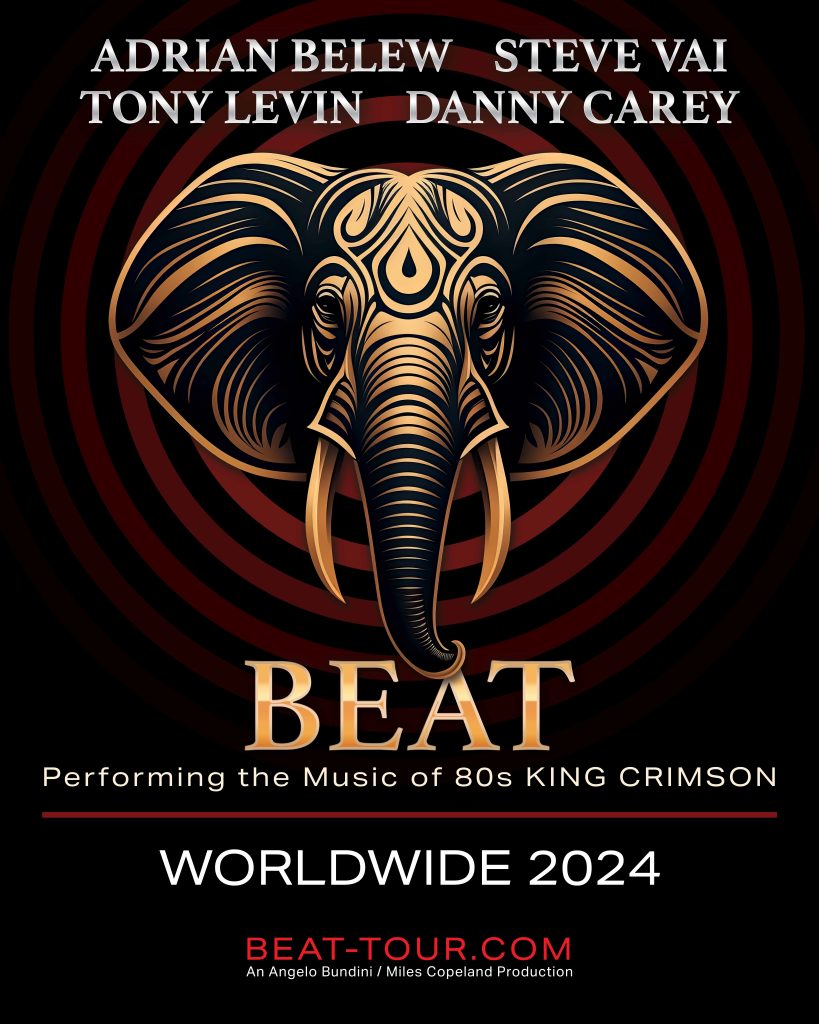
The BEAT tour was a monumental endeavor, driven by the challenge of faithfully capturing the magic of King Crimson’s landmark recordings, complete with the iconic Roland guitar synthesizer tones that helped define their sound. The band dedicated weeks to rehearsals and preparation to meet the sky-high expectations of discerning and enthusiastic King Crimson fans. This effort included designing and building bespoke guitar rigs that performed with flawless precision. With 65 shows on the schedule, the tour demanded not only exceptional musicality but also a solid and reliable crew to bring the vision to life.
Doug MacArthur, Vai’s trusted guitar tech, was at the heart of this effort. From the tour’s inception to its triumphant execution, he was instrumental in ensuring that Vai’s performances paid homage to the epic recordings of King Crimson. Key to Vai’s rig was the cutting-edge BOSS GK-5 Divided Pickup, paired with the BOSS GM-800 and SY-1000 Guitar Synthesizers—components MacArthur describes as nothing short of “amazing.” Equally as remarkable, the newly introduced guitar synth rig performed flawlessly throughout the tour, with MacArthur reporting “zero problems” over its entire run.
Now, back in Los Angeles, we caught up with MacArthur in the nerve center of Vai’s studio. The luthier-turned-tech reflected on the unforgettable BEAT tour and his intricate work behind the scenes that made it all possible.
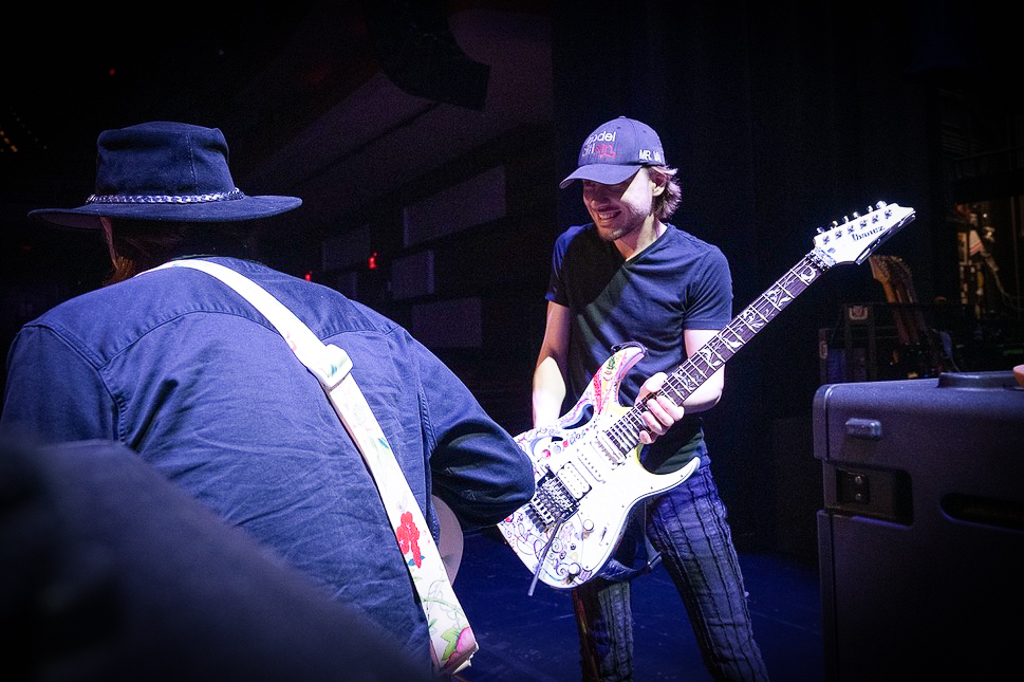
Trial by Fire
How did you become Steve Vai’s guitar tech?
I never really was a tech. I was a luthier for many years based in Boston, Massachusetts. Several years ago, I did some fretwork for Steve, and he really liked what I did. We really hit it off. It got to the point where Steve’s long-time guitar tech, Thomas Nordegg, was getting a little older, and Steve asked if I could fill in. And I never left.
So, I kind of just became a tech. I already knew how to do most of the stuff required for the gig, but I had to learn much of the guitar tech stuff on tour. I mean dealing with things that can happen to gear on tour being tossed around on a truck. Being on the road is a whole other universe. It was trial by fire, but I adapted nicely.
What are some of your most challenging moments on tour so far?
I was lucky. The first tour we did was a European tour where the travel and logistics were grueling, but it was great training. However, no major rig-related issues came up. But of course, since then, I’ve had some really bizarre gear/rig moments. Those moments can be terrifying at the time, but 20 minutes later, it can be hilarious. It becomes a good story and a great opportunity to learn.
We traveled to Dubai to play a show. We flew from Los Angeles via London, but none of the gear made it with us. So we landed in the Middle East at about 1 o’clock in the morning. The gig is the next day, and we have no gear! There was no way we would cancel the gig, but there were no guitars, amps, pedals, or anything. The question is: How am I going to make the show work for Steve Vai?
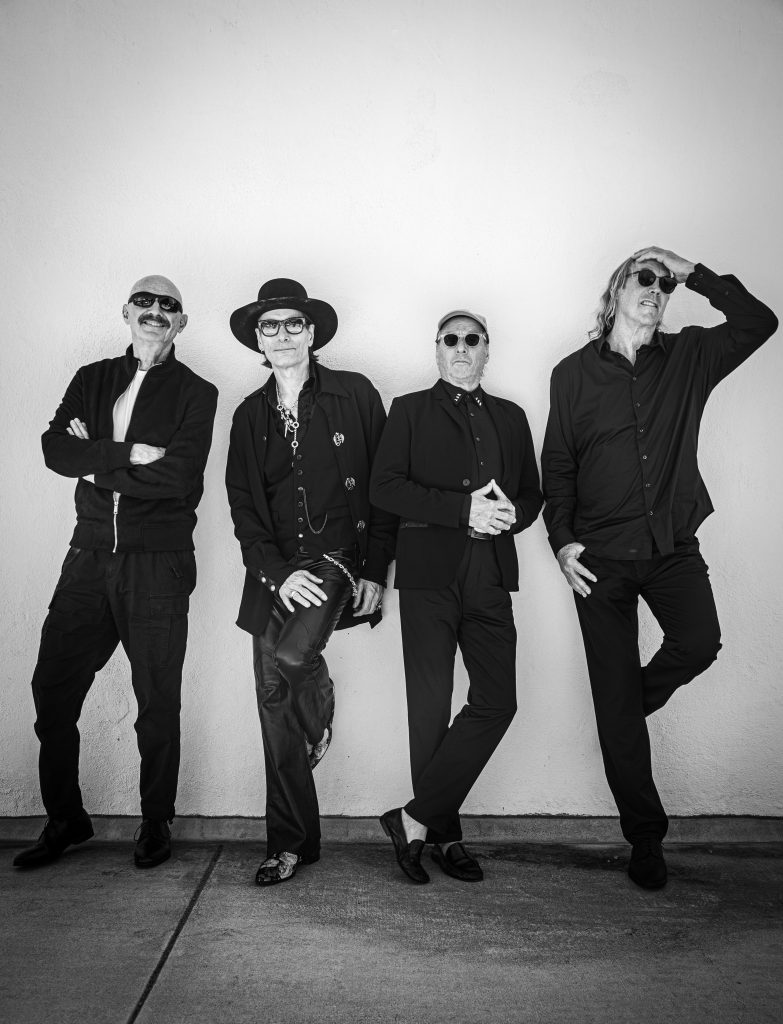
Thankfully, with some pieces of gear I had as carry-on luggage and going to every music store there, plus my guy at Ibanez, I could scrounge together enough gear in about four hours for us to do a sound check and the show. And it was a great show! But that was the most trial-by-fire moment that I could think of: going to a faraway part of the world and having to pull everything together on such short notice to make a show that has to happen.
That was an intense one, but it was great afterward. It was a good victory. I remember Steve and I sitting on the couch after the gig, just looking at each other like, “Did that happen?”
Guitar techs often say one of the great things about BOSS pedals is that you can easily get hold of them on tour anywhere in the world.
Yeah, as a matter of fact, I think we used the CH-1 Super Chorus into two DD-7 Digital Delays. It worked great. And they’re always consistent. You can find them anywhere.
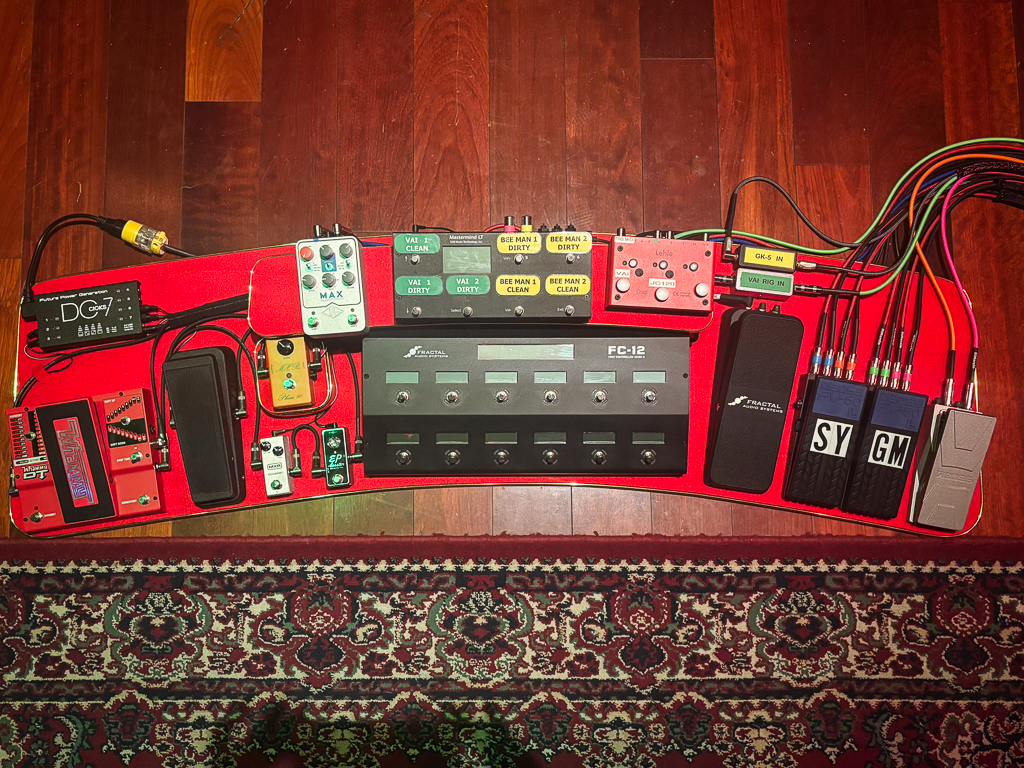
"The BEAT rig is different from the normal Vai rig. There are elements that are very similar to his normal rig."
Doug MacArthur
Pedal Talk
Tell us about Steve Vai’s effects setup for the BEAT tour.
The BEAT rig is different from the normal Vai rig. There are elements that are very similar to his normal rig. So, out of his guitar, the signal still goes into a wah wah (the Dunlop Cry Baby 95Q), then it goes into a Jemini overdrive, though we’ve been experimenting with MXR on a new overdrive pedal, so we have a couple of different prototypes that we toss in and out. But it’s basically a wah, overdrive, MXR Phase 90, and a DigiTech Whammy DT.
There’s also an Xotic EP Booster which Steve’s really liking lately. It’s a little grittier than his normal kind of compressed hi-fi overdrive sound. He used that a lot on this tour, a lot of the time just to give the guitar a kind of ugly boost for certain synth sounds. Things pushed a little too far—that kind of sound. We also used a UA Max compressor. That was just for the Roland JC-120 Jazz Chorus amplifier.
There are other things on the board. It looks like a lot of gear, but it’s really a handful of conventional guitar pedals and then the FC-12 switcher for the Fractal, the Mastermind LT for the Synergy preamps, and a host of expression pedals for various things: the Fractal, the BOSS Guitar Synthesizers, and the Roland Jazz Chorus.
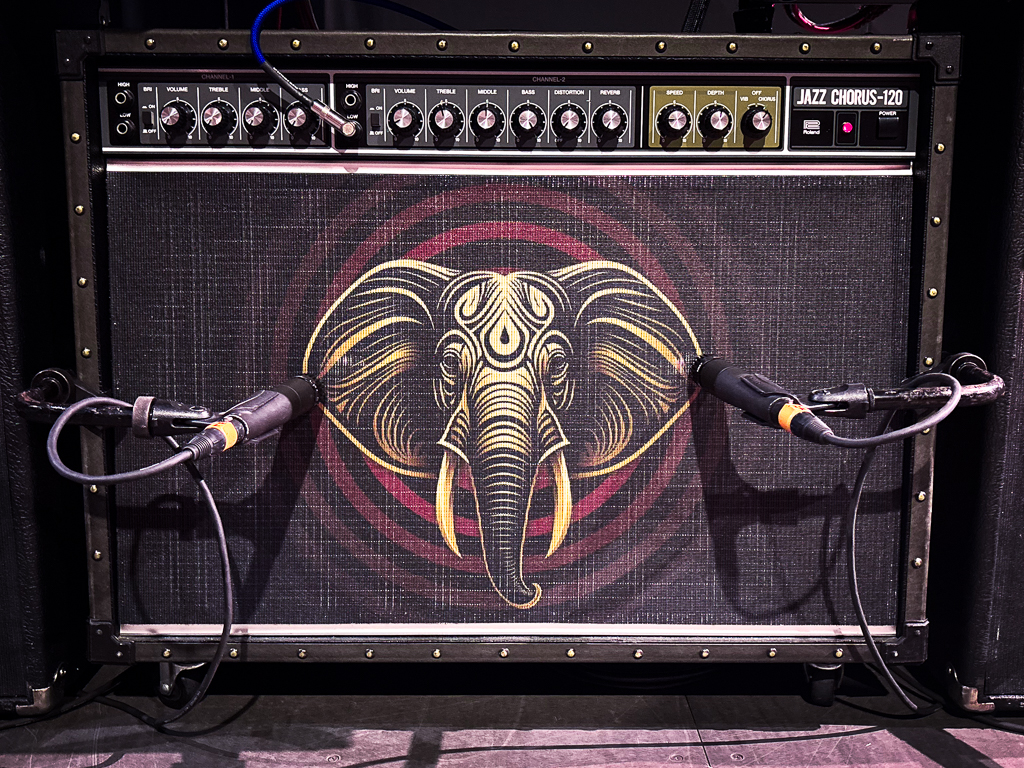
"The JC-120 was all over those King Crimson records"
Doug MacArthur
Original Chorus
Tell us about Steve Vai’s BEAT tour Roland JC-120 Jazz Chorus amp.
We had the compressor set so it was very kind of seamless. It wasn’t really adding any level or deducting anything; it just gave it a little bit more of a friendlier sound. It just smoothed it out a bit because that is a very peaky kind of amp. But it blended really well with Steve’s other clean sounds.
I had the JC-120 on MIDI, so it would pop in and out in conjunction with Steve’s normal stereo rig, which is usually the Bassman clean channels on the Synergy modules. So, there was lots of bass, lots of treble, and not a lot of mids. When the Jazz Chorus would pop in in the center, there was suddenly this very clean but strident midrange-y amp that was adding a really cool dimension.
The JC-120 was all over those King Crimson records they were playing material from. So, it gave his clean sounds a little more authenticity for those songs they were playing. But it also filled that void. Steve’s clean sound is really beautiful and very full, but it can lack midrange, and the Jazz Chorus gave it the perfect little boost up. It sounded tremendous. Really great.
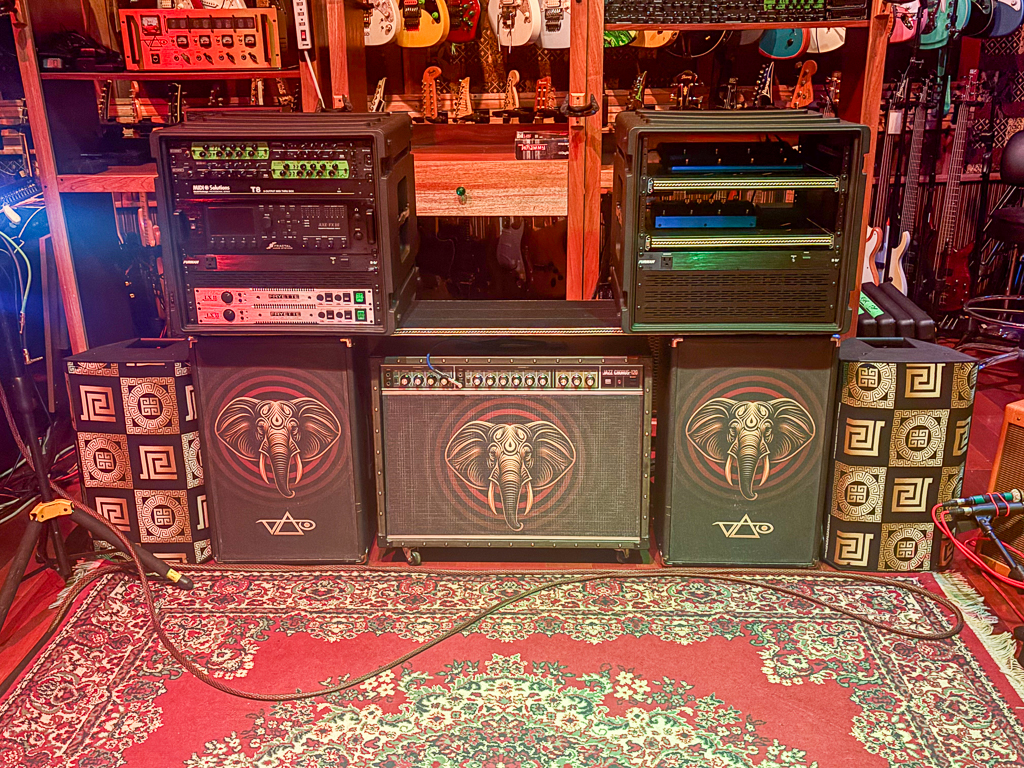
"Steve always had the chorus on, which I was concerned about at first."
Doug MacArthur
How did Steve Vai use the chorus sound on the Roland JC-120 Jazz Chorus?
Steve always had the chorus on, which I was concerned about at first. Adrian Belew’s rig was his Fractal and Jazz Chorus, and I think he had the chorus on most of the time. I remember him talking about when he would play with Robert Fripp; they’d both have their chorus on, and it didn’t really jive the way you think it should.
But we never ran into that issue. Steve wanted the chorus on, and I would listen to him and Adrian play “Frame by Frame,” and it always blended nicely. So, I guess it wasn’t as much of an issue as I thought it would be.
Binaural BEAT
Did you DI or mic up the Roland JC-120 Jazz Chorus in stereo?
We used Shure SM57s on everything. Steve’s stereo rig is miked up with 57s, then we had a 57 on each speaker of the Jazz Chorus. Steve is really specific about how his cabs are miked. Most guitar players would take a 57 and place it either directly at the center of the cone or a little off the cone, but Steve wants it pointed right in the crease. If you ever look at the mic placement on his live cabs, you’ll see the mic is at an acute angle. He really likes that, and it’s a big part of his sound.
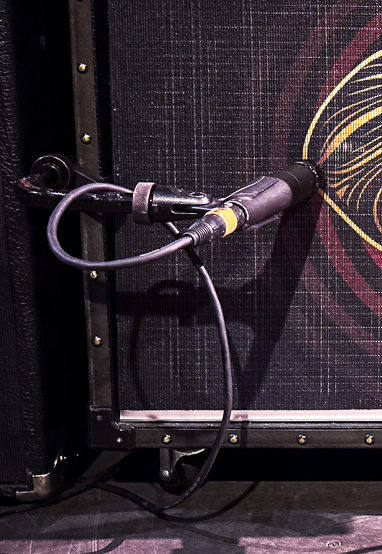
Which Roland JC-120 Jazz Chorus model did Steve Vai use for the BEAT tour?
We were going to take Steve’s original Jazz Chorus, but it didn’t have an effect loop. We needed the loop to control the master volume using a foot pedal, so we used a new, regular production JC-120 from Roland. I don’t think the speakers are the same as Steve’s original one, but in his normal rig, he always uses Celestion Vintage 30 speakers. They work really well for his sound.
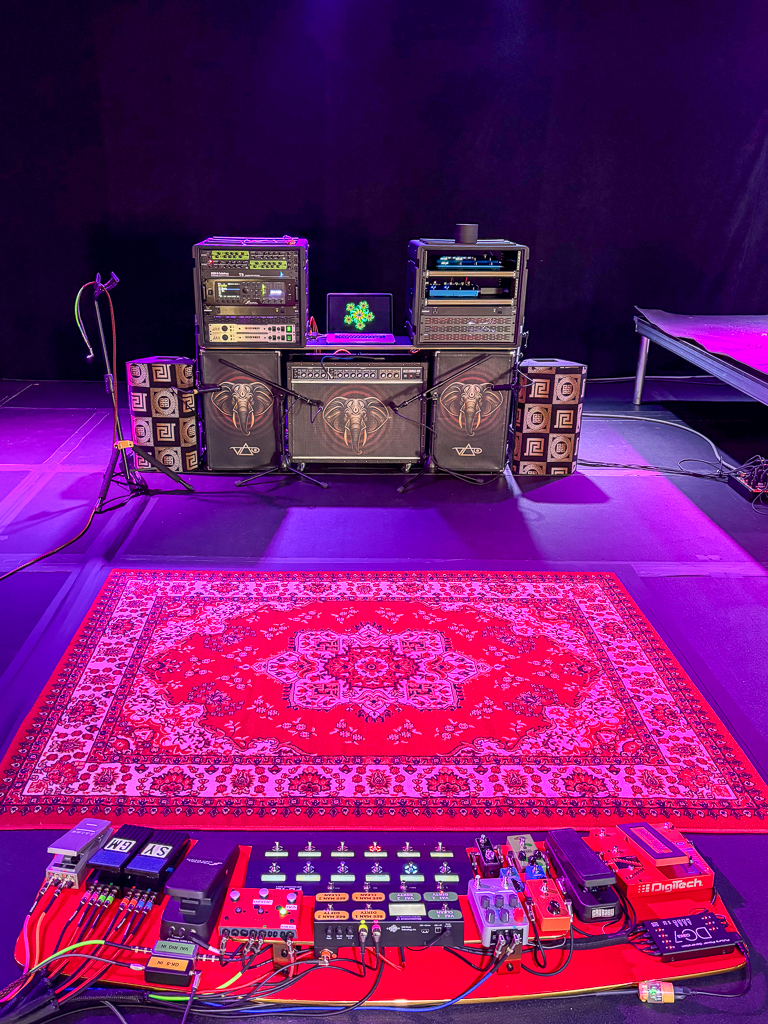
"We used a new, regular production JC-120 from Roland."
Doug MacArthur
Before we went on tour, we tried out a lot of different speakers, like Eminence, Electro-Voice, and other Celestions. But when doing the taste test in the studio (going back and listening to recorded tracks), as soon as you get to a Vintage 30, it’s the only thing it could be. Steve Vai and Celestion Vintage 30s are like peanut butter and jelly.
Dialing In
How did you balance the guitar sounds of Steve Vai and Adrian Belew?
When Adrian Belew came over to the house with Danny Carey and Tony Levin, that’s when we started making subtle changes. When Steve and I were on the Satch/Vai tour earlier in 2024, that’s really when the preparation began. Steve would be practicing all the Robert Fripp parts backstage, and any spare time I had, I was coordinating with Ibanez guitars, along with the gentlemen at Roland.
We were figuring out the rig for the BEAT tour. Once we got home after the Satch/Vai tour, we immediately went to work full-time; Steve was in the studio learning the music, and I was building the rig. So, by the time the rehearsal started, Steve and I were really dialed in. There were subtle tweaks made here and there. With certain songs like “Frame by Frame” and “Neal and Jack and Me,” where it’s two clean guitars together, Steve was definitely concerned about wanting to respectively blend with Adrian really well tone-wise. So, subtle adjustments were made here and there.
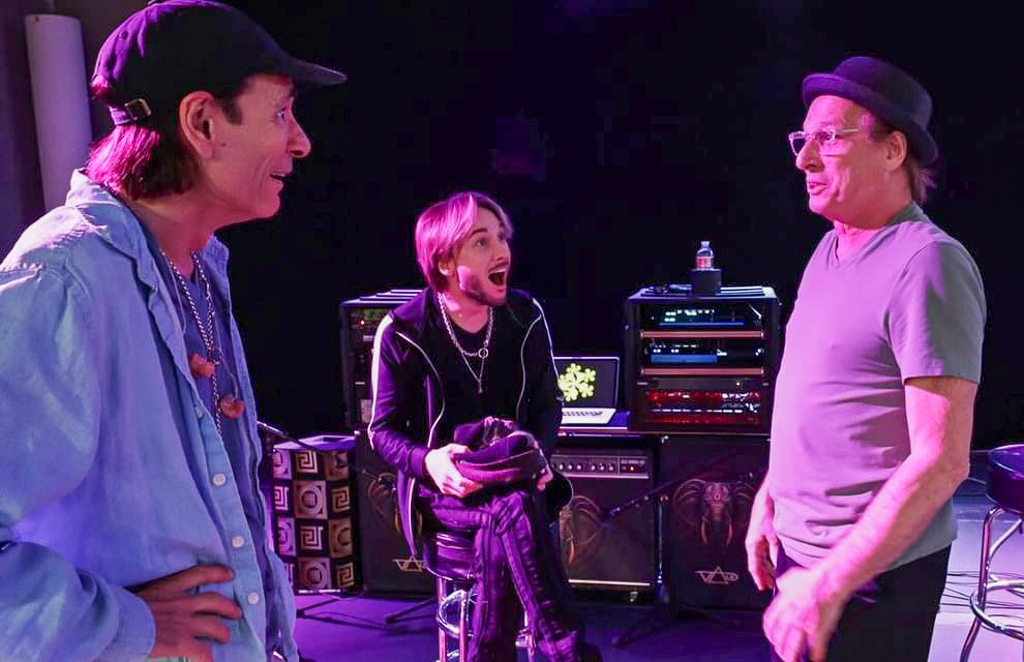
"Steve and Adrian lived in very different ZIP Codes on this tour in terms of tone."
Doug MacArthur
It was interesting to see Adrian Belew take his vintage Roland GR-300 Polyphonic Guitar Synthesizer out on the road.
When Adrian first came over for rehearsals, and I saw that he didn’t have a backup, I reached out to a guy I know who collects vintage Roland GR-300s. He had first contacted me to ask if Steve wanted to borrow one for the tour. But, of course, we had already decided on the BOSS GK-5 Divided Pickup and the much newer setup comprising the BOSS GM-800 and SY-1000 Guitar Synthesizers.
So, we didn’t need one, but we ended up borrowing one as a backup for the tour. That gave Adrian a lot of peace of mind because he hadn’t used it since the last time he went out on tour with King Crimson. A vast portion of Adrian’s rig really made you feel as though you had stepped into a time machine and gone back to the ’80s. Steve and Adrian lived in very different ZIP Codes on this tour in terms of tone.
Nostalgia Tripping
How did Steve Vai’s rig compare to Adrian Belew’s?
Steve was using new stuff. Adrian was very brave to take out the Twang Bar King guitar and the GR-300. He had some other gear that was not incredibly reliable or modern, like his old Electro-Harmonix Echoflanger. But it was cool to have the duality of Steve being very modern and Adrian being very faithful to the way it was in the ‘80s.
The fans really got a kick out of seeing Adrian utilizing his tools from the past, and although there is a sacrifice in peace of mind and reliability, I feel it was best he went the way he did with the GR-300 and his Twang Bar King guitar. I mean, who doesn’t love a good nostalgia trip?
Was there a sacrifice in reliability every night? Absolutely. Some nights, there were some amusing moments because of the equipment—missteps and things not firing up right. I mean, there were a lot of those moments on this tour. But Adrian was a trooper through all of it. Thomas Nordegg would run out and reboot things and sprinkle his fairy dust.
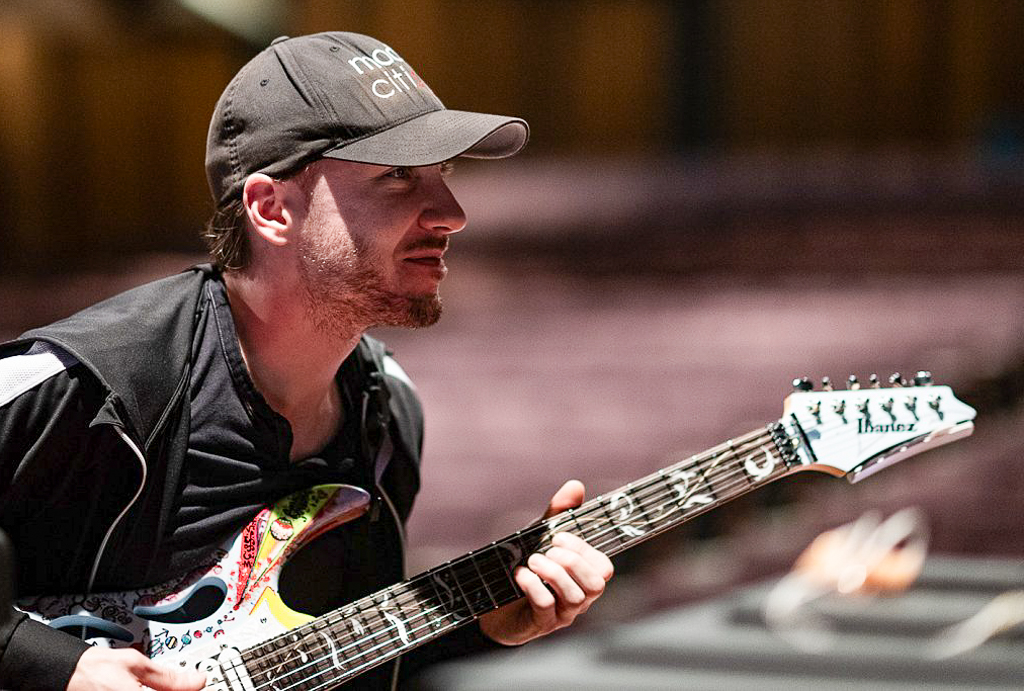
"It was cool to have the duality of Steve being very modern and Adrian being very faithful to the way it was in the ‘80s."
Doug MacArthur
Guitar Synth Heaven
How was your experience using BOSS Guitar Synthesizers on the BEAT tour?
Amazing. Steve and I had never really used any guitar synthesizers live before this tour. You have to understand that because of the way Steve performs, moves around on stage, and treats his gear, the equipment goes through a lot. I was really concerned because once I knew the BEAT tour was confirmed and we’d be using guitar synthesizers, I thought, “Oh my god, what kind of 13-pin hell am I going to be battling every day?”
There are so many people to thank at Roland in the preparation for this tour, but from the first step, it got easier and easier and easier. Firstly, I reached out about the new GK-5 Divided Pickup that we were going to be putting in the Ibanez PIA guitars we were taking on tour. The team in Japan got back to me immediately and told me about the new GK5-KIT-G6 install kit. GK-5 Divided Pickups have a regular quarter-inch TRS connection, not the older-style 13-pin connection. And that blew my mind. Just on a performance level, to have a TRS cable running all the signal to the processor is huge!
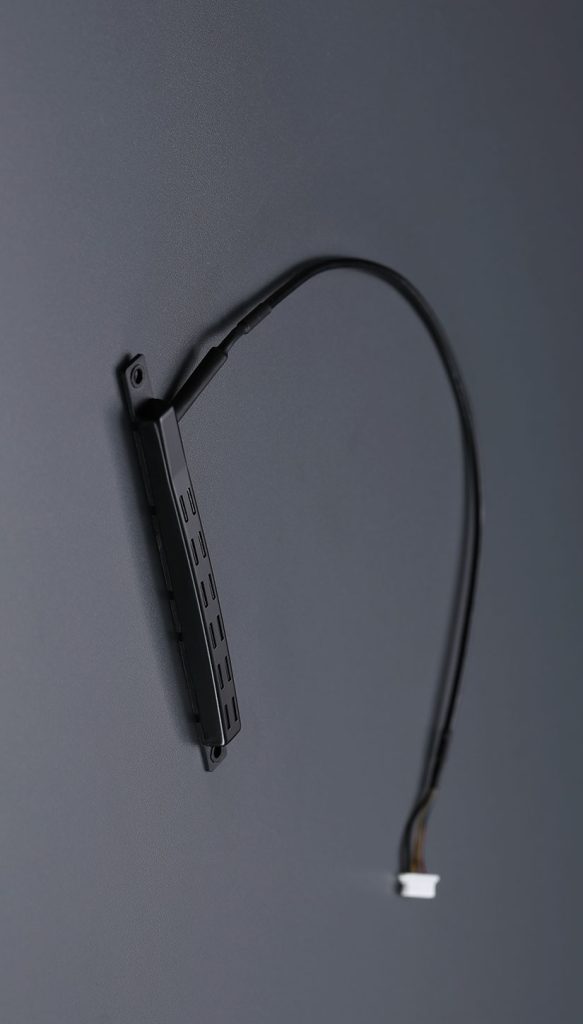
I guess using the older style 13-pin format on tour would have been okay. But I would have needed ten backup cables because Steve would probably break them. But I used one BOSS cable for the whole of this tour! I never had to use any backup cables. That, plus the signal coming off the GK-5 pickup, was really reliable and really great.
The two units we used, the BOSS GM-800 and SY-1000 Guitar Synthesizers, worked well together. The software editors were very easy to understand and intuitive.
"Having zero problems using two guitar synthesizers for a 65-show tour was shocking to me."
Doug MacArthur
Flawless Performance
Tell us about the sounds you used.
Some of the sounds that we designed are more conventional than others. There were songs when we used both the GM-800 and SY-1000, and there were others where we used the SY-1000 on its own. We were able to utilize them in any way we wanted very easily. We ran the GK-5 pickup into a GM-800, and used a BOSS GKC-DA GK Converter for the SY-1000. I programmed MIDI for patch changes or bypass, and they worked flawlessly.
Having zero problems using two guitar synthesizers for a 65-show tour was shocking to me. I should have known better that the BOSS gear would have performed flawlessly every night, just based on the other Roland and BOSS gear. That always works great, too. But it was kind of shocking to get to the end of the tour, look back, and realize there were no issues, ever. And that’s really, really cool.
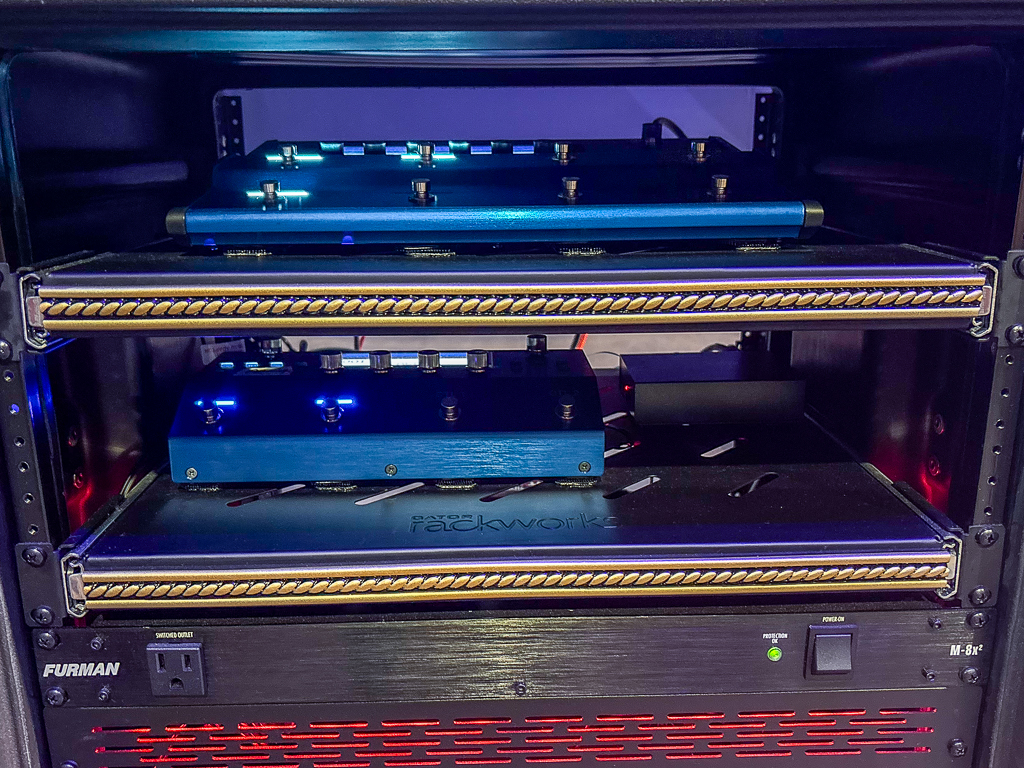
Did Steve Vai appreciate the more slimline Serial GK designs?
I think the last time he used a guitar synthesizer was on 2016’s Modern Primitive. He was definitely impressed with how the technology had come forward since then. One cool thing about the GK5-KIT-G6 install kit is that it comes with a lot of bells and whistles. It’s really cool. You have the ability to control the units using dedicated toggle switches and a knob that you can mount on the guitar.
When Ibanez was making the first prototype BEAT guitar, Steve wanted all those controls installed. But I knew it wasn’t going to work because we were going to have all the changes done via MIDI. Plus, the volume was going to be controlled using an expression pedal. Basically, the less stuff he can hit while he’s playing, the better.
We had all the fingertip controls from the GK-5 kit set up on a guitar for a while, but we stripped it all back once we realized Steve would hit them while performing. However, I think those controls will be very practical for most people. It is a very impressive kit. It’s nice when you get a piece of gear and you have more options than not enough.
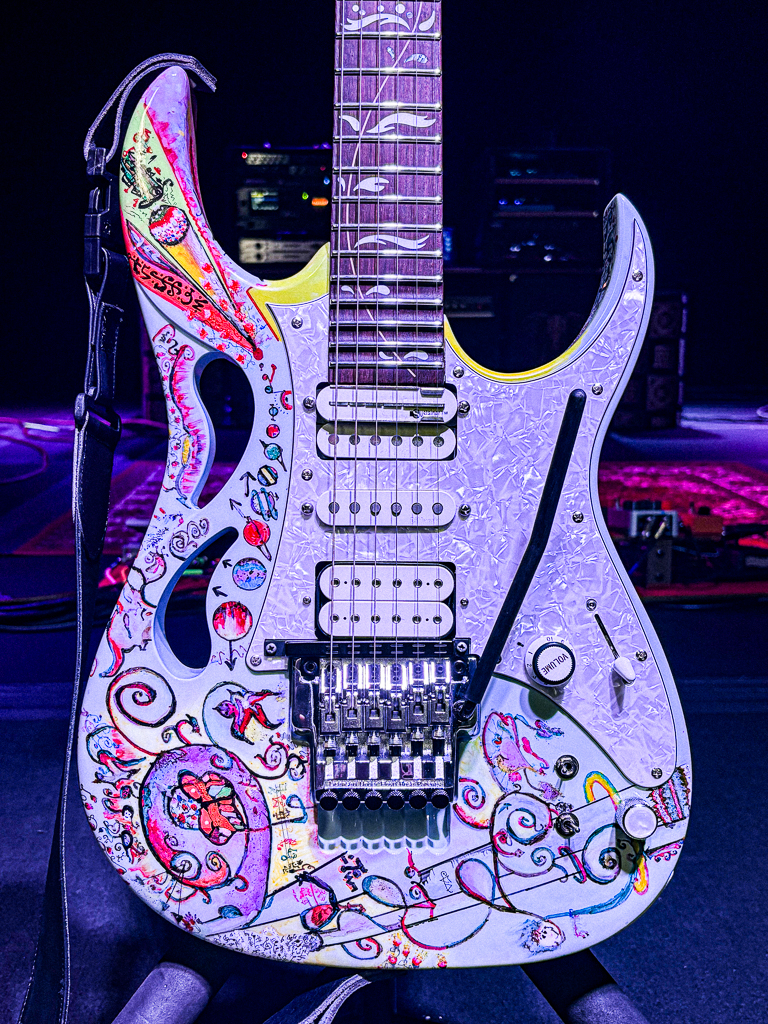
"When we first started rehearsing in the studio, I just slapped one of the regular external GK-5 Divided Pickups on one of Steve’s JEMs."
Doug MacArthur
Next Generation Divided Pickups
Have you fitted a BOSS GK-5 Divided Pickup? If so, how did you find the installation process?
When we first started rehearsing in the studio, I just slapped one of the regular external GK-5 Divided Pickups on one of Steve’s JEMs. Once we decided to go with the GK5-KIT-G6 install kit, I brought a couple of PIAs down to the Ibanez LA Custom Shop, and they routed the guitars professionally. It’s a very small board, so it’s not like a massive amount of the guitars had to be routed away.
It’s very simple, and it’s all pre-wired. I would advise anyone interested in installing one in the guitar that, firstly, it’s not a highly invasive process, and secondly, it’s very easy and intuitive to hook it all up.
One of the biggest battles we faced was giving Steve the range to be able to pull all the way up on the trem and not hit the GK-5 pickup. Usually, I have it set up to where he can pull up extremely high. But with the GK-5, we needed to keep the strings within the correct range, so we found a happy balance by adjusting the sensitivity in the unit.
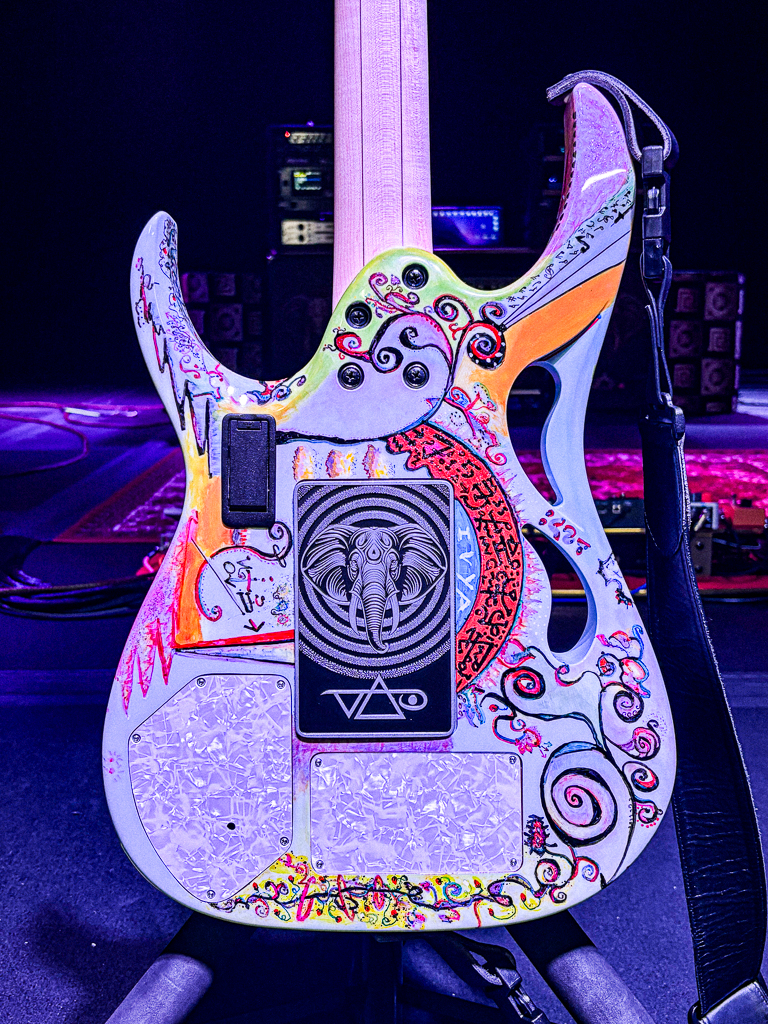
What advice would you give to people starting their journey with the GK-5 Divided Pickup?
I would suggest using the simple GK-5 (or GK-5B for a bass) that you can easily attach to the top of your guitar. If you use the sticky pads to attach it, there will be no permanent alteration to your instrument. You can remove it whenever you want. I mean, you can just take it off the guitar whenever you don’t want to use it. The single GK-5 works just as well as the full install kit version in terms of tracking and how it performs. It’s really nice to be able to take advantage of that option.
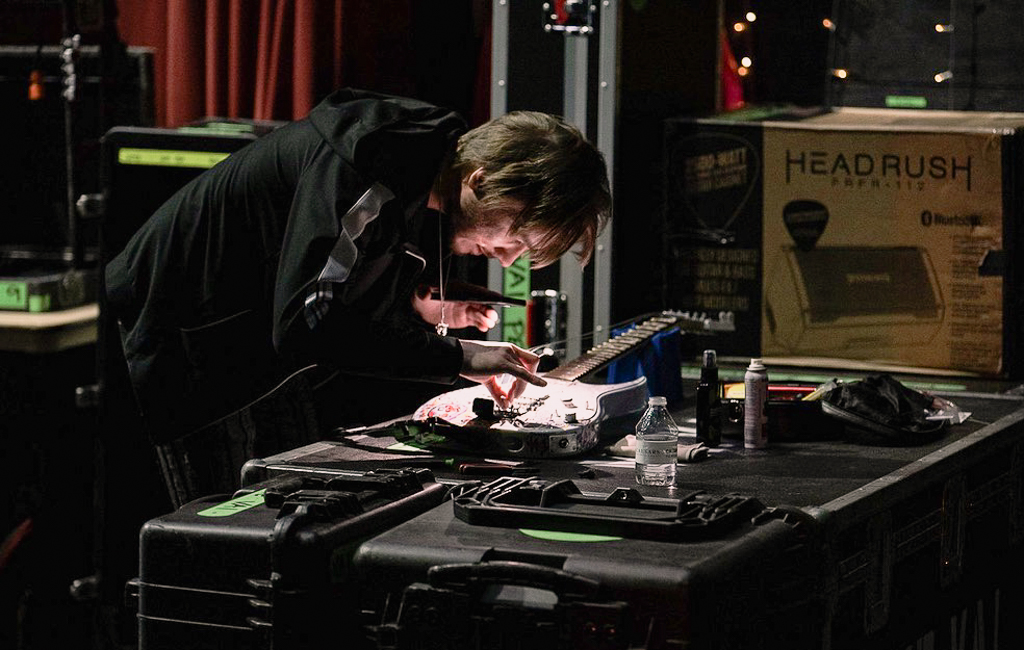
"Whether you’re using the SY-1000 or the GM-800, I think most guitar players will become addicted fast."
Doug MacArthur
Whether you’re using the SY-1000 or the GM-800, I think most guitar players will become addicted fast. You quickly realize that it’s not just a bunch of crazy, goofy sounds. For example, there are a lot of sounds that can combine subtle background textures with your regular guitar tone. These BOSS units can add a spatial quality that is otherworldly.
Steve Vai has a song called “I’m Becoming.” It’s a very beautiful piece using the sustainer with a very clean sound. It’s very angelic sounding at times. Right after we put a GK-5 pickup in one of his guitars for the BOSS Guitar Synthesizers, I was in the studio playing that piece with a string pad underneath it, and it was just like a match made in heaven. So, I know Steve will want to use this in the future.
Sonic Exploration
How deeply did you explore the sounds of the BOSS SY-1000 Guitar Synthesizer?
Steve went really deep into it. He went on his own journey. Once we had the unit set up and the guitars ready, with the string sensitivity dialed in and everything else, that’s when he went into it deep. He started with all the preset patches, going through everything song by song. Sometimes, we would spend hours together going through the presets, exploring the sounds until he found something that he was looking for.
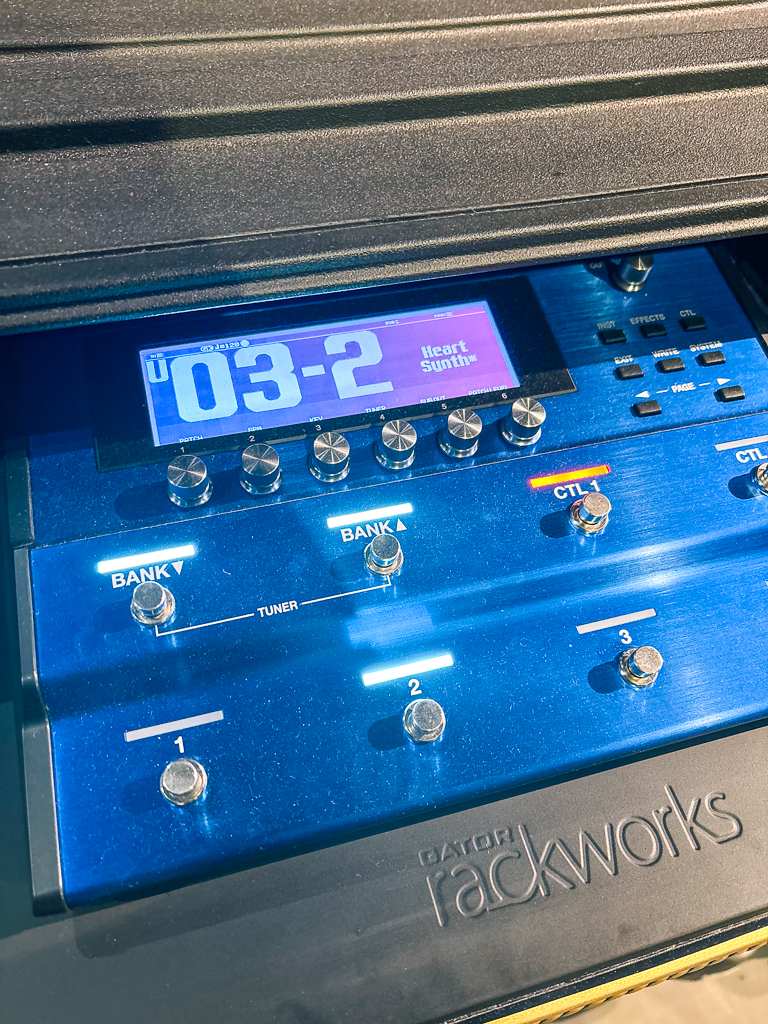
If we were trying to design a more complex sound, we would go through all the presets, make notes, and dial that in. Then, we’d create a patch. Sometimes, they were older Roland GR sounds, and other times, they were more glitzy, brassy sounds. You also have effects to sculpt the sound further to be exactly what you want.
What was your approach to using the BOSS GM-800 Guitar Synthesizer?
We used the GM-800’s ZEN-Core synth engine for string sounds. The string sounds are incredible. The songs that Steve used that kind of sound on were “Heartbeat,” “Man with an Open Heart,” “Sleepless,” and “Frame by Frame.” Whenever you heard songs in the BEAT set with string sounds, it was usually the GM-800. And any time you heard things that were a little whackier or obtuse, it’s typically the SY-1000.
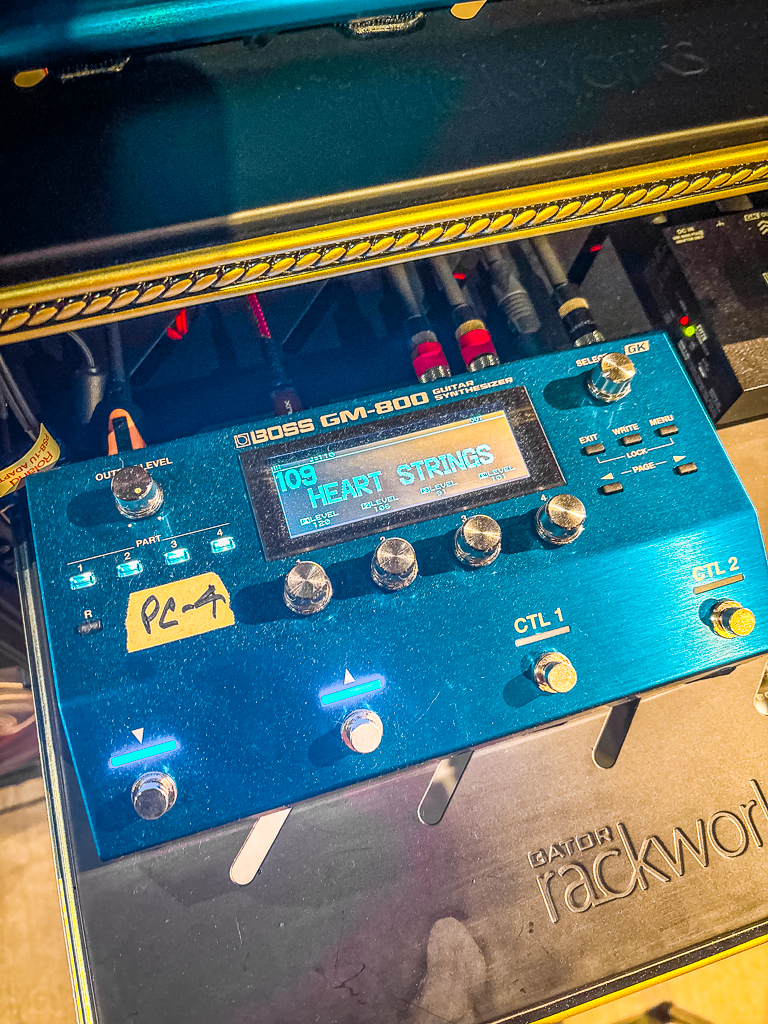
"I’d be lying if I didn’t say that 'Sleepless' was the best number because the audience was the most enthusiastic."
Doug MacArthur
Magic Moments
What are some of your favorite BOSS Guitar Synthesizer moments from the BEAT tour?
Looking back at all those shows, some of my favorite BOSS Guitar Synthesizer moments were in “Sartori in Tangier.” The SY-1000 was really getting used a lot there; just really fat, crazy cyber-punk guitar synth sounds.
I always loved hearing the blend of the GM-800 string sounds in songs like “Man with an Open Heart” and “Frame by Frame.” “Frame by Frame” was so cool because Robert Fripp never played a string sound in that section. It was something I believe Adrian brought to the table. There was a recording that some college kids had done where they were playing “Frame by Frame” as an orchestra.
For one of the verses, they had strings come in, so Steve decided to design a patch that would be that kind of sound and play the chords that way. That was a cool moment, because you hear Adrian’s voice, which is so powerful and consistent night after night. To suddenly go from that interlocking clean guitar thing to massive orchestral strings with Adrian’s voice was a real treat to hear.

But I’d be lying if I didn’t say that “Sleepless” was the best number because the audience was the most enthusiastic, and it’s a very dance-y sort of song. That massive SY-1000 sound made it incredible. Then Steve used the GM-800 blended with the SY-1000 and his normal rig for little stabs when Adrian’s singing in the outro. That’s a good example of all three big pieces of the rig being utilized.
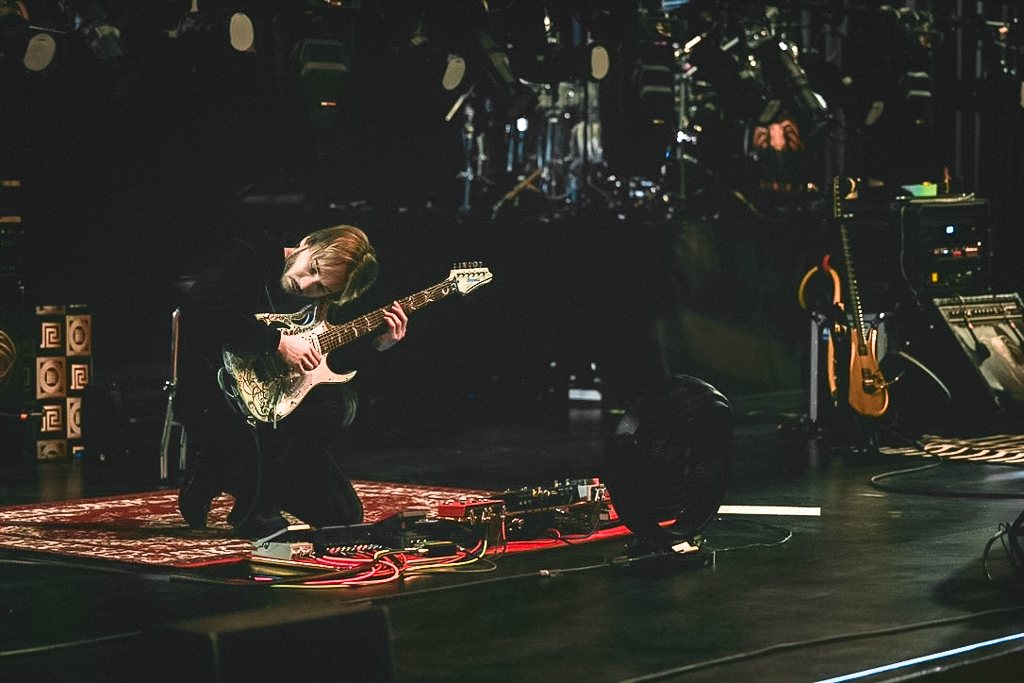
"Everybody kicked ass. And so did the BOSS gear."
Doug MacArthur
Guns Blazing
So, how did the BOSS gear perform on the BEAT tour overall?
Looking back, it couldn’t have gone any better. I mean, it really couldn’t have. I was waiting for something to go wrong. I mean, all the touring we did with the Hydra, that crazy triple neck guitar: y’know, things happened. And taking two guitar synthesizers on tour for the first time, I was presuming there would be problems of some sort. No matter how well gear is looked after and maintained, how much you know it backwards, forwards, and upside down, shit still happens occasionally. But nothing happened! I mean, every fucking night!
I do all the controlling for Steve’s patches on the side of the stage, and I’d go to a certain scene, fire up the synths, and it was always there, guns blazing. No issues. Everybody kicked ass. And so did the BOSS gear.

